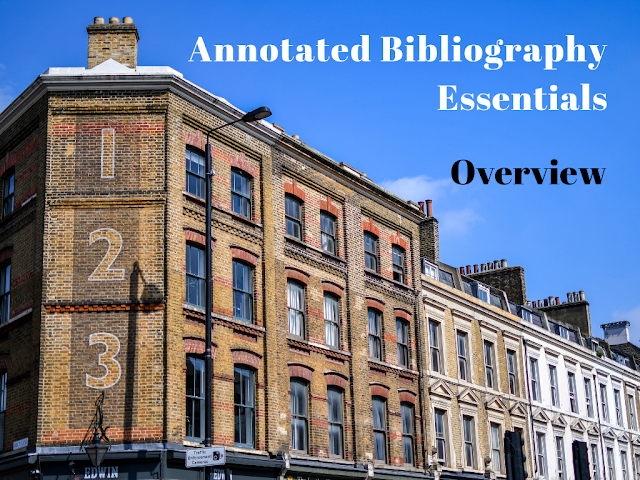Annotated Bibliography Essentials: Overview
The annotated bibliography is a common course assignment for Walden University students and is a useful tool with which writers can organize their research. Over the next weeks, we will share an in-depth look at each of the different elements of the annotated bibliography. We hope this blog series will help Walden's scholar-practitioners understand, complete, and utilize this helpful scholarly research writing tool. Enjoy! And stay tuned for the next entries in this series!
What is an annotated bibliography and why can’t I find the formula
for it in the APA Publication Manual?
While the APA Style Blog points out that there is not a specific format for annotated bibliographies and mentions that, in fact, “APA Style doesn’t use
bibliographies of any sort,” the annotated bibliography is a useful form
for writers to utilize. Specifically, the annotated bibliography is a writing
form that allows writers the opportunity to showcase the information they have
gleaned from each of their research sources; what they make of that
information; and important conclusions they have drawn, reached, and
processed.
Most importantly, partaking in creating an annotated bibliography serves a greater purpose. It allows writers the opportunity to
assess what research has come before them, showcase why they interpret the
research the way they do, and see where they, as researchers and writers, can both
contribute and participate in the greater research conversations that are going
on in their fields.
What annotated bibliography form do Walden University writers use?
We have a solid tried and true definition and form on our
website that Walden students can look to for suggested
form and formatting of the annotated bibliography:
An annotated bibliography is a list of references that not only identifies the sources of information but also includes information such as a summary, a critique or analysis, and an application of those sources' information.
Thus, Walden students will want to be sure to format their
annotated bibliographies to include four main parts for each of their research
sources. These four parts are the reference entry, summary, analysis, and
application.
So, what is the purpose of the annotated bibliography?
I like to think about the annotated bibliography as a way
to prove that I have formatted the sources I used correctly in providing correct
reference entries, so my readership can find each one of my sources
effortlessly, and that the summary, analysis, and application sections reflect
a truly valuable bundle. Each of these components showcase important
perspectives and different vantage points on the research at hand.
In the summary, writers reveal that they have read the
source thoroughly and have reflected to readers what it is about overall.
Showing their readership that they know their research well in the analysis
section entails that they point out what the author or authors have
highlighted and what the authors have not highlighted, what they have missed,
avoided, or simply not brought to fruition. In a nutshell the summary and
analysis serve as proof to readers: proof that the writer has done their research
and that they know what each author has shared on the topic at hand and what
they make of it.
Reflecting this knowledge and deep analysis gives writers
credibility as valuable and reputable sources themselves. Thus, their
readership knows that they have done the work that allows them to make
associations in the application section and decipher where the gaps in research
are on their topic and where there may be questions left unanswered and
problems left unsolved.
If writers do this bundle of reference entry, summary,
analysis, and application for each of their sources well, they most likely have
earned their seat at the table as a reputable researcher and writer armed with
valuable takes and contributions on their topic that will benefit their field
at large. And, who doesn’t want a seat at the table and perhaps possible
publication someday?
If you're curious to learn more, click here to view all of the posts in this five-part series on Annotated Bibliography Essentials!
Christina Lundberg received her BA from the University of Minnesota and obtained her MFA from Naropa University. Presenting over 6 years of college teaching experience at various academic settings, Christina has taught a wide array of English courses both residential and online. Christina is driven by the desire to grow, shape, and develop a page to reach its highest potential. In her position as a Walden University Writing Instructor, she enjoys witnessing the transformations of a good paper grow into greatness.
.png)
Never miss a new post; Opt-out at any time
Subscribe to:
Post Comments
(
Atom
)





No comments :
Post a Comment